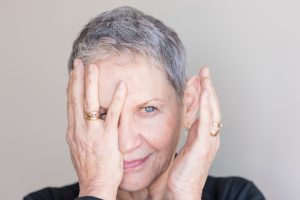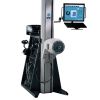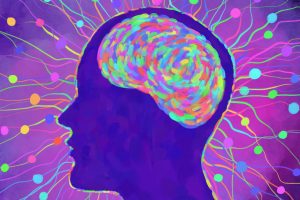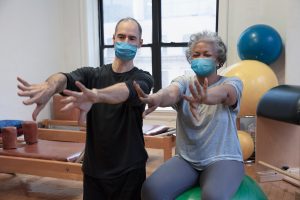
Take a HINTS: Bedside Exam for Stroke Patients
Treatment GuidelinesThe HINTS exam has an impressive body of literature to support its use in the clinic. Vestibular Physical Therapists, Occupational Therapists, and others can use it quickly and easily at the bedside to rule out stroke.
The HINTS exam (Head-Impulse, Nystagmus, Test-of-Skew) is a and simple oculomotor exam used by a variety of healthcare professionals. The HINTS exam has an impressive body of literature to support its use in the clinic. Vestibular Physical Therapists, Occupational Therapists, and others can use it quickly and easily at the bedside. It is extremely important to quickly and accurately identify a stroke, so the patient can get proper stroke treatment.
What is the purpose of a HINTS exam? To rule out stroke in patients with acute vestibular symptoms.
Peripheral vs. central acute vestibular symptoms
According to research, dizziness leads approximately 2.6 million emergency department (ED) visits annually1. Dizziness evaluations in EDs cost the United States healthcare system an estimated $3.9 billion per year2. Any effort to control these costs should include reducing the overuse of expensive neuro-imaging techniques such as MRIs.
Even clinicians who don’t work in the acute care setting can still come in contact with patients suffering from vestibular symptoms. Many times, the clinician may even be these patients’ first point of contact—especially in states where patients have direct access to PTs (meaning they can see a Physical Therapist without needing a referral from their primary care physician).
What do we mean by vestibular symptoms? Generally, they include:
- Dizziness
- Vertigo
- Nausea
- Vomiting
- Imbalance and gait unsteadiness.
Symptoms can develop suddenly over the course of hours to days. They may last for weeks or more. A person with an acute vestibular syndrome often experiences worsening of symptoms when their head moves in certain ways (such as rolling over in bed). They may also demonstrate nystagmus (repetitive, uncontrolled eye movements).
Vestibular symptoms are often caused by peripheral conditions such as benign paroxysmal positional vertigo (BPPV) or vestibular neuritis. But sometimes vestibular symptoms point to a more serious issue—an ischemic or hemorrhagic stroke within the brainstem or cerebellum.
Indeed, misdiagnosis of strokes happens frequently within the emergency care setting, especially in younger patients1. Correctly diagnosing these vestibular symptoms is essential for insuring effective and efficient care.
How the HINTS exam works
As mentioned, the HINTS exam is a bedside test that can screen for central (e.g., stroke) versus peripheral (e.g., neuritis) causes of acute vestibular symptoms. To do the test:
- Have the patient sit in a comfortable position and focus their gaze on you
- Turn the patient’s head slowly from side to side
- Next, turn the head quickly by gently turning the head from center to about 20 degrees rotation left or right. These quick thrust-like turns should be gentle and unpredictable, and interspersed with slow turns.
You can observe this test being performed in this video.
There are three elements of the HINTS exam that you need to observe while doing the procedure:
- Head impulse, or loss of eye fixation(a test of the vestibulo-ocular reflex): If the patient’s gaze remains steadily forward during the head tosses, this is a normal or negative result. A negative or normal head impulse indicates a central cause of the vestibular symptoms. If the patient shows rapid eye movement, this is an abnormal or positive result, which points toward a peripheral cause.
- Nystagmus (eye movement that is spontaneous and/or evoked when visually tracking an object): If the patient shows no nystagmus or horizontal/unidirectional nystagmus, the cause is peripheral. With a vertical, rotary, or horizontal/bidirectional nystagmus, the cause is central.
- Test of skew (alternately covering one eye and having the patient look left and right to assess for re-fixation): The patient will show no skew, or a small horizontal skew if peripheral. A pronounced, especially vertical skew points to central.
To summarize, a person’s vestibular symptoms are considered central, and likely caused by a stroke if they have a negative head impulse, fast phase alternating nystagmus, and re-fixation on the test of skew. A simple acronym to remember this is INFARCT: Impulse Negative, Fast phase Alternating, Refixation on Cover Test. This handy chart shows the test components, symptoms to look for, and what they mean.
What the Research Says
The HINTS exam is a well-validated tool with a sensitivity of 94.6 to 100% for ruling out stroke in patients3 . In other words, if the test is negative for stroke, the clinician can be confident that this is an accurate and true clinical reading. Amazingly, the HINTS exam has better sensitivity than neuro-imaging studies within 24-48 hours after the onset of symptoms4. For example, even just one of the three positive signs on a HINTS exam is more sensitive than an MRI within this acute window.
Alternatively, a CT scan has a sensitivity of just 16% for ruling out stroke.
Conclusion
Evidence-based diagnostic and therapeutic techniques optimize clinic growth and revenue. They also improve outcomes for your individual patients. Using them in your day-to-day clinical practice can make a world of difference.
If you’d like to learn more about objective tests and measures and how to utilize them in your practice, contact BTE. We’re here to help you maximize your workflow and improve the clinician/patient relationship from the very first examination until the final follow-up.
Sara M., DPT
References
- Newman-Toker, D.E., Kattah, J.C., Talkad, A.V., et al. (2009). H.I.N.T.Sto diagnose stroke in the acute vestibular syndrome—three-step bedside oculomotor exam more sensitive than early MRI DWI. Stroke, 40(11), 3504-3510. Retrieved from https://www.ncbi.nlm.nih.gov/pmc/articles/PMC4593511/.
- Ammar, J., Govindu, R., Zohdy, W., et al. (2017). Dizziness in a community hospital: central neurological causes, clinical predictors, and diagnostic yield and cost of neuroimagingstudies. J Community Hosp Intern Med Perspect, 7(2), 73-78. Retrieved from https://www.ncbi.nlm.nih.gov/pmc/articles/PMC5473196/.
- Choi, J.H., Oh, E.H., Park, M.G., et al. (2018). Early MRI-negative posterior circulation stroke presenting as acute dizziness. J Neurol, 265(12), 2993-3000. Retrieved from https://www.ncbi.nlm.nih.gov/pubmed/30341546.
- Tsang, B.K.T., Chen, A.S.K, & Paine, M. (2017). Acute evaluation of the acute vestibular syndrome: differentiating posterior circulation stroke from acute peripheral vestibulopathies. Intern Med J, 47(12), 1352-1360. Retreivedfrom https://www.ncbi.nlm.nih.gov/pubmed/28696571.





